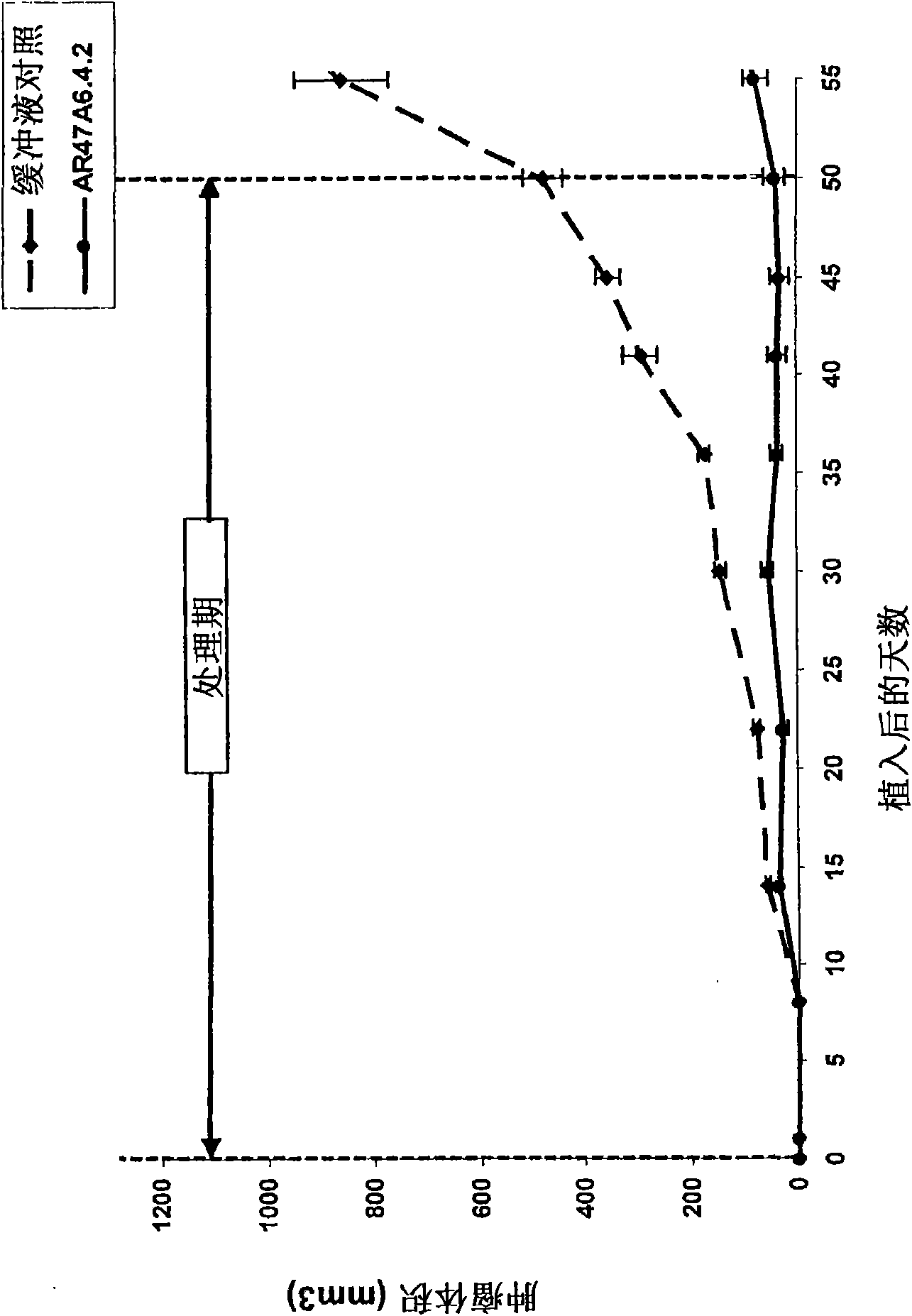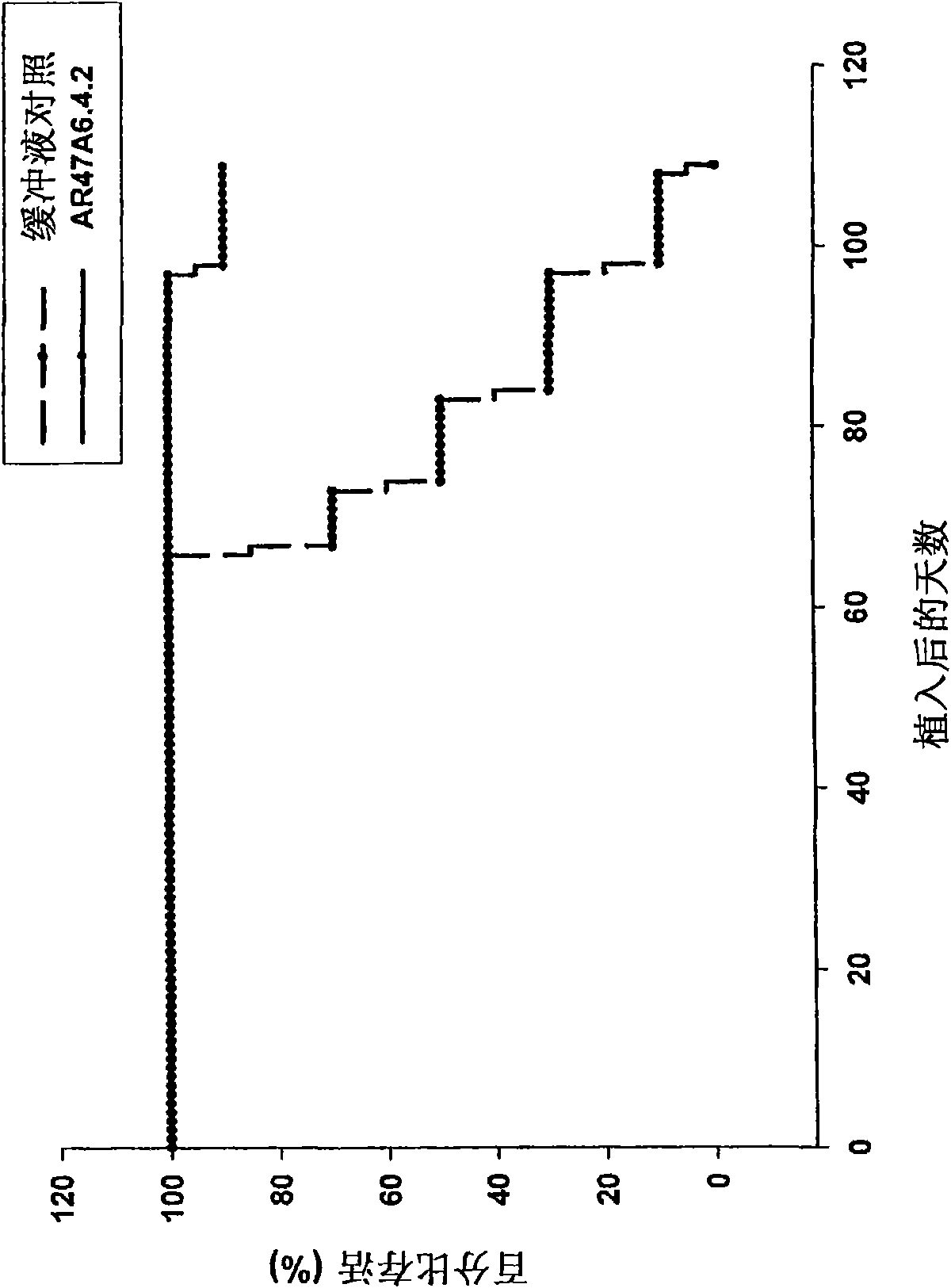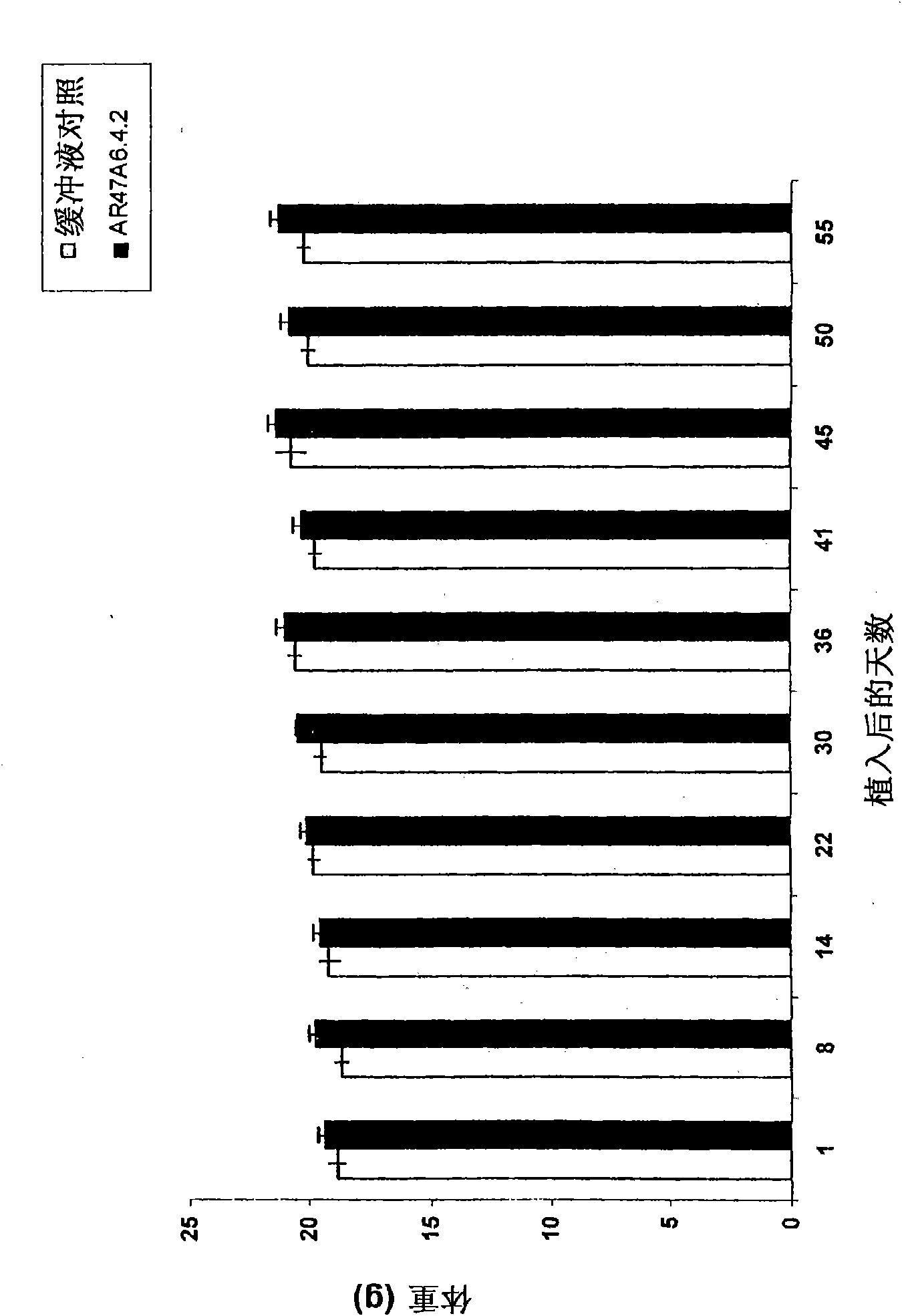Humanized and chimeric anti-TROP-2 antibodies that mediate cancer cell cytotoxicity
A technology of humanized antibody and cytotoxicity, which is applied in the field of diagnosis and treatment of cancer diseases, and can solve problems such as unknown antibodies
- Summary
- Abstract
- Description
- Claims
- Application Information
AI Technical Summary
Problems solved by technology
Method used
Image
Examples
Embodiment 1
[0171] In vivo tumor experiments using human MDA-MB-231 breast cancer cells
[0172] The efficacy of AR47A6.4.2 in the MCF-7 human breast cancer xenograft model was previously demonstrated (as disclosed in S.N. 11 / 709,676). To extend this finding, AR47A6.4.2 was tested in the MDA-MB-231 human breast cancer xenograft model, which is distinct from the MCF-7 model and is Her2 / neu negative, female Hormone and progesterone receptor negative. refer to figure 1 , 2 and 3, 8-10 week old female SCID mice were implanted with 5 million human breast cancer cells (MDA-MB-231 ) in 100 microliters of PBS solution by subcutaneous injection in the right loin of each mouse. The mice were randomly divided into two treatment groups, 10 in each group. 1 day after implantation, in a solution containing 2.7mM KCl, 1mM KH 2 PO 4 , 137mM NaCl and 20mM NaCl 2 HPO 4 After dilution of the diluent from the stock concentrate, each group was administered intraperitoneally with 20 mg / kg AR47A6.4.2 de...
Embodiment 2
[0176] In vivo tumor experiments using human PL45 pancreatic cancer cells
[0177] The efficacy of AR47A6.4.2 was previously demonstrated (as disclosed in S.N. 11 / 709,676) in a prophylactic PL45 human pancreatic cancer xenograft model. To determine effective dose levels, AR47A6.4.2 was tested at various doses in the established PL45 model. refer to Figure 4 , 5 and 6, 8-10 week old female SCID mice were implanted with 4 million human pancreatic cancer cells (PL45) in 100 microliters of PBS solution by subcutaneous injection at the nape of the neck of each mouse. When the average mouse tumor volume reaches about 100mm 3 , the mice were randomly divided into 5 treatment groups, 10 in each group. On the 32nd day after implantation, with 2.7mM KCl, 1mM KH 2 PO 4 , 137mM NaCl and 20mM NaCl 2 HPO 4 20, 10, 2, or 0.2 mg / kg AR47A6.4.2 detection antibody or buffer control was administered intraperitoneally to each group in a volume of 300 microliters after dilution from the st...
Embodiment 3
[0182] Human normal and multi-tumor tissue staining
[0183] Additional IHC studies (previous studies published in S.N. 11 / 709,676) were performed to further characterize the prevalence of the AR47A6.4.2 antigen in human cancers. Transfer slides from -80°C to -20°C. After 1 hour, slides were postfixed in cold (-20°C) acetone for 10 minutes and then allowed to reach room temperature. Slides were rinsed three times for 2 minutes each in cold phosphate buffered saline (PBS) at 4°C, followed by blocking endogenous peroxidase activity in 3% hydrogen peroxide for 10 minutes. Slides were then rinsed 3 times in PBS for 5 minutes, followed by incubation in universal blocking solution (Dako, Toronto, Ontario) for 5 minutes at room temperature. AR47A6.4.2, anti-human muscle actin (clone HHF35, Dako, Toronto, Ontario), anti-cytokeratin 7 clone OV-TL12 / 30 (Dako, Toronto, Ontario), anti-TROP-2 clone 77220.11 (R&D System Inc., MN, USA) or an isotype control antibody (against Aspergillus n...
PUM
| Property | Measurement | Unit |
|---|---|---|
| molecular weight | aaaaa | aaaaa |
Abstract
Description
Claims
Application Information
 Login to View More
Login to View More - R&D
- Intellectual Property
- Life Sciences
- Materials
- Tech Scout
- Unparalleled Data Quality
- Higher Quality Content
- 60% Fewer Hallucinations
Browse by: Latest US Patents, China's latest patents, Technical Efficacy Thesaurus, Application Domain, Technology Topic, Popular Technical Reports.
© 2025 PatSnap. All rights reserved.Legal|Privacy policy|Modern Slavery Act Transparency Statement|Sitemap|About US| Contact US: help@patsnap.com



